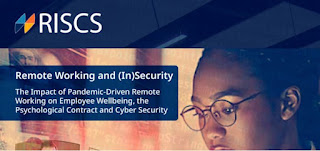ETSI Conference: European Telecommunications Standards Institute, Antibes (by Katerina Mavrona)
For the specialist community interested in cybersecurity standardization in Europe, visiting Sophia Antipolis, home to the European Telecommunications Standards Institute, better known as ETSI, is something of a rite of passage. Set among rolling, pine-clad hills overlooking the Mediterranean, the sublime location of this leading European technology park hardly hints at the highly technical work taking place within it.
Founded in the early 1970s as a science and knowledge centre,
Sophia Antipolis took its name from the ancient Greek Antipolis trading post,
the predecessor of modern-day Antibes, located along the Côte d’Azur’s historic
maritime routes. Its architects leaned into this lineage, shaping the
technopole as a space where technology, innovation and commerce could meet.
Today it hosts around 2,500 companies and organisations across sectors from
biotechnology and fintech to cybersecurity. Its strong ICT and
telecommunications orientation, already emerging in the late 1980s, invited the
positioning of ETSI’s headquarters here.
ETSI itself was established following a European Commission
proposal in a 1987 landmark green paper, at the time anticipating the role information,
exchanges of knowledge and communications would come to play in an
increasingly interconnected world. The creation of common standards would make
sure that Europe could keep pace with its international peers and secure access
to global markets. ETSI’s mission today still reflects those ideas, as a
European Standards Organization (ESO) with a membership open to ICT industry and
expert communities from across the world. Members of this global community
convened last October at Sophia Antipolis for the ETSI Security Conference 2025,
which I also attended as a PhD researcher studying the geopolitics of
international cybersecurity standardization.
This year’s conference brought together experts and industry
representatives to discuss the latest developments in the global cybersecurity
landscape with an emphasis on emerging technologies including generative AI and
LLMs, as well as the state of security standardization across numerous domains.
From 6G networks to consumer verticals and IoT or discussions on the cyber
skills gap, the scope of the conference was broad enough to offer a
comprehensive understanding of the state of the field, reaching beyond
participants’ distinct areas of specialization.
As a first-time attendee of a non-technical background, I
approached the conference proceedings largely in an observer role. Alongside presentations on the state of play
across varied domains, I centred on two distinct but interrelated features of
the conference’s organization and its thematic direction, which held particular
relevance for my own research.
The first was the in-practice interpretation of ETSI’s
foundational principle of openness and global orientation, as witnessed on the
ground. I had the opportunity to attend a genuinely diverse set of presentations
from representatives across a wide spectrum of stakeholders, ranging from
powerful industry actors to up-and-coming SMEs. I was also able to discuss with
delegates from what was indeed a wide geographical spectrum, and note their
interest and considerations in standardization processes, including their
European variant. Finally, the correspondence between ETSI’s core principles
and staff and other participants’ emphasis on signalling openness and an
inclusive posture toward outsiders, interested parties, and potential members
was an interesting observation.
A second point of interest was the presentations and
discussions on the new ETSI work streams connected to the EU
Cyber Resilience Act (CRA) of 2024. The CRA is a regulation introduced as
part of the EU’s expanding cybersecurity legal toolkit, setting cybersecurity
requirements for products with digital elements placed on the EU market. ETSI
has currently been tasked, via formal standardization requests extended by the
European Commission, with the development of vertical standards providing
presumption of conformity with CRA requirements.
Interestingly, there was a notable degree of resonance in
how adherence to openness, touched upon above, finds its application in this
new work stream, with the EU engaging with and inviting third-country
representatives, industry, and experts to generate cybersecurity governance
benchmarks using the instrument of international standardization. Some of these
observations were only made accessible through direct participation, offering a
grounded perspective on these evolving dynamics and underscoring the value of
on-site engagement.




Comments
Post a Comment